If you’re curious about the differences between the keto vs carnivore vs animal-based diets, this complete guide will give you all the info you need to take control of your health and shed those extra pounds. These low-carb eating plans have gained popularity for their ability to promote weight loss and improve overall health, but which one is right for you?
In this post, I dive into the world of Keto and Carnivore diets AND the animal-based diet, exploring their pros and cons, and explaining why they are all excellent choices for achieving your weight loss goals. By the end of this article, you'll have a clear understanding of these diets' benefits and be able to make an informed decision on which one suits your lifestyle best, along with sample meal plans, helpful apps, and inspirational IG accounts to follow to give you an idea of what a day in the life of each eating style looks like.
In my cookbook, Healthy Electric Smoker- 100 Great Recipes with All Natural Ingredients and Fewer Carbs!, I included keto and paleo swaps outs for all recipes, and having eaten high protein/ low carb and writing about it since 2010, I have a lot of experience in eating low carb. In this article I share my feedback on which style of eating has personally worked best for me to maintain my weight and feel optimally healthy after trying paleo, keto, carnivore and animal-based eating styles. I even give a sample meal plan of my own daily meals and snacks to give you an idea of what to expect and how to get started! I also list tips for cutting out harmful ingredients and some of my favorite brands to shop for on an animal based eating plan.
The beauty of all of these diets is you will never feel hungry or restricted! I love a health focused eating plan that will let me eat all the steak I want!
I want to emphasize that the word “diet” is used loosely here as I believe all of these eating styles should ultimately lead into a lifetime of healthy eating that is focused on cutting out processed foods. Eliminating processed, chemical laden foods from your eating routine and focusing on whole foods that nourish your body will automatically do wonders for your health and lead to weight loss, no matter which style of eating is right for you.
Alright, now let’s dig into the differences of keto vs carnivore and the animal based diet!
Part 1: What is the Keto Diet?
The ketogenic, or keto, diet is a very low-carbohydrate, high-fat diet that aims to put the body into a state of ketosis. In ketosis, the body switches from primarily using glucose from carbohydrates for fuel to primarily using ketones from fat for fuel. This metabolic shift to fat-burning is the core purpose of the keto diet. The Keto Diet first came about in the 1920s as a way to treat epilepsy by regulating blood sugar.
The keto diet typically limits daily net carb intake to 20-50 grams per day. To induce ketosis, strict restriction of carbohydrate intake is key. Foods like grains, starchy vegetables, fruits, sugars, and legumes are greatly reduced or eliminated on keto. Instead, the diet is centered around foods high in natural fats like meat, fish, eggs, oils, butter, nuts, seeds, and low-carb vegetables like leafy greens. Consuming high amounts of fat satisfies hunger and sustains energy levels in the absence of carbs.
The ultimate goal of Keto is to restrict carbs so that your body burns fat for fuel. The state of Ketosis is defined as “a metabolic state in which your body uses fat as its main energy source.”
A properly constructed keto diet also emphasizes adequate protein for muscle maintenance, organ function, and metabolic processes. Nutrient-dense whole foods across all food groups are encouraged to support micronutrient needs. As ketosis causes more water and electrolyte loss through increased urination, proper hydration and electrolyte balance are also important to mitigate side effects. This is why electrolyte powders such as LMNT are so big in the keto and carnivore community – this diet makes it easy to lose electrolytes.
Adhering closely to the prescribed macronutrient ratios and carb limits while focusing on healthy keto-friendly whole foods are the foundational pillars for successfully inducing and maintaining ketosis as well as experiencing the desired benefits of a ketogenic lifestyle.
There are many “keto” approved processed foods on the market these days and I warn against buying processed foods with the “keto” label on them.
The goal should always be to eat nutritious whole foods, and anything that comes in a package will still be loaded with chemicals and preservatives- this is where planning ahead and having healthy snacks on hand (think nitrate-free beef jerky or hard-boiled eggs) will make all the difference in sticking to a keto diet.
Avoid marketing gimmicks at the grocery store that are capitalizing on the keto diet trend, read your labels, and focus on whole foods versus quick, convenient processed foods!
Balancing Macros On the Keto Diet
Balancing macronutrients on a keto diet follows a different ratio than a standard diet, since ketogenic diets are specifically very low in carbs and high in fat. Here is a breakdown:
Macronutrients on keto:
Carbohydrates: Found in small amounts from foods like leafy greens, nuts, dairy. Keto limits carbs to 20-50 g per day. Carbs are minimized to promote ketosis.
Protein: Found in foods like meat, fish, eggs, some dairy and vegetables. Keto recommends 0.8-1.2 g of protein per kg of reference body weight daily to maintain lean mass. Protein intake is kept moderate.
Fat: Found in oils, butter, cream, fatty cuts of meat, nuts, seeds. Fat makes up 60-80% of total daily calories. Healthy fats fuel ketosis and help manage hunger.
- Determine your total calorie needs (calculators estimate based on your stats and activity).
- Limit daily net carbs to 20-50 g per day. Net carbs = total carbs – fiber.
- Set protein intake based on your body weight (0.36-0.54 g per pound reference weight)
- Remaining calories come from fat.
Macros For a 2,000 cal diet:
~30g net carbs (120 calories)
~100-180g protein (400-720 calories)
~111-167g fat (~1,000-1,500 calories)
Keeping carbs extremely low while getting adequate protein and high fat intake tailored to your body's needs are key pillars of the ketogenic diet. This shifts the body into primarily burning fats for fuel.
Best Apps for Tracking Macros on the Keto Diet
Here are some of the most popular and user-friendly apps for tracking macros (macronutrients):
- MyFitnessPal – Very popular and easy to use food and exercise logging app. Has a large database of foods and recipes. Easily set and track macronutrient targets.
- Cronometer – Tracks macronutrients and micronutrients to help ensure nutritional needs are covered. More detailed than some other trackers.
- Carb Manager – Specifically designed for low-carb and keto diets. Tracks net carbs specifically. Good for balancing macros on low-carb.
- MacroFactor – Uses algorithm to calculate and adjust daily macro targets based on your logs and weekly weight trends.
- Lifesum – Colorful and visual app to log meals and snacks. Set macronutrient target percentages.
- Lose It! – Straightforward logging app with comprehensive food database that shows macronutrient breakdowns.
- Senza – Dedicated keto app for tracking blood ketones and macros together. Includes research-based keto education.
Many apps now allow you to customize macronutrient ratios to meet specialized diet needs like high-protein, paleo, Mediterranean, and of course, ketogenic. Finding one that suits your personal preferences is key!
Sample Keto Diet Meal Plan
Here is a sample keto meal plan to give you an understanding of what a day in the life of a keto diet could look like:
Breakfast:
- Scrambled eggs with bacon and avocado
- Bulletproof coffee (coffee with butter and MCT oil blended in)
Lunch:
- Bunless burger topped with cheddar cheese and sautéed mushrooms (check out all my beef recipes here!)
- Side salad with olive oil dressing and avocado
Dinner:
- Cedar Planked Salmon cooked on the grill or in the oven
- Zucchini noodles tossed in olive oil and parmesan
- Side of roasted broccoli OR, Grilled Romaine Lettuce
Snacks:
- Celery sticks with (sugar free) almond butter or guacamole
- Cucumber slices with goat cheese
- Nuts like almonds, walnuts or pecans
- (Nitrate Free) Grassfed Beef Sticks
- Hard boiled eggs
- (Nitrate Free) Beef Jerky – try my Beef Jerky Recipe here!
- Pork rinds
Beverages:
- Water
- Unsweetened tea
- Black coffee
- Sparkling water with lemon
Dessert:
- Fresh berries topped with (no sugar) whipped cream
- Keto mug cake made with almond flour and sugar substitute
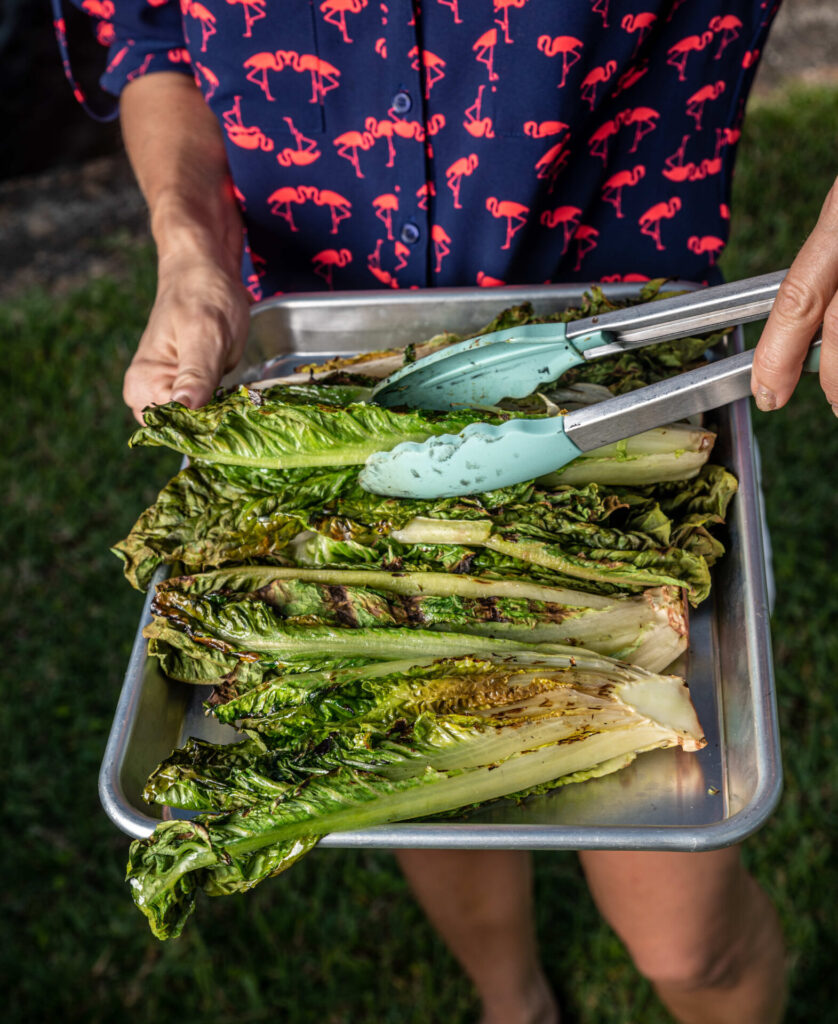
Grilled Romaine is one of my favorite side dishes to make on the Keto Diet. While grilling your protein throw romaine hearts on the grill and watch the flavor transform on the grill!
The focus is getting around 20-30 net grams of carbs daily from nuts, dairy, vegetables, berries, and other low-carb foods while meeting protein needs and getting over 70% calories from fat sources.
The Pros and Cons of the Keto Diet
Here are the potential upsides of the keto diet, along with some of the potential downsides.
Keto Diet Pros:
- Encourages rapid weight and body fat loss
- Can improve markers for metabolic diseases like insulin resistance
- High satiety and sustainable energy from fat intake
- Allows for a variety of food options like meat, dairy, eggs, oils, nuts, seeds, low carb vegetables, and berries
Keto Diet Cons:
- Difficult transition period adapting to carb restriction
- Potential micronutrient deficiencies if the diet is not well-formulated
- Higher learning curve around macronutrient tracking and ketone monitoring
- Some social/lifestyle limitations
Helpful Tips for Successfully Following a Ketogenic Diet:
- Track your macronutrients – Tracking carbs, protein, fat intake using an app ensures you maintain the keto ratios. Keep net carbs under 20-50 grams per day.
- Stay hydrated – Drink plenty of water and mineral-rich electrolytes like bone broth and salty greens. This prevents keto flu symptoms.
- Meal prep – Make batches of keto staples like cauliflower rice, zoodles, hard boiled eggs, chicken, and healthy fats for quick meals.
- Supplement if needed – Taking magnesium, potassium, and ensuring you are getting enough electrolytes can avoid muscle cramps, headaches, and other imbalances as your body adjusts.
- Eat enough fat – Increase healthy fats like olive oil, fatty fish, avocado, nuts and nut butter. Keeps you feeling energized and satisfied.
- Get enough sleep – Lack of sleep and too much cortisol can negatively impact ketosis. Support your body and hormones.
- Find community support – Join online keto groups, have a keto buddy, or do an accountability program. Help stay motivated!
- Experiment and customize – Play around with keto versions of your favorite carby foods. There’s tons of keto recipes online!
Sticking to keto long-term is achievable when you plan, prep, and surround yourself with positive support. Be patient and listen to your body too! Plus, don't forget to move your body and get some exercise in too- It does wonders for you mentally and physically!
Part 2: What is The Carnivore Diet?
The carnivore diet, sometimes called the zero-carb diet, is an ultra-low-carb, high-protein, high-fat diet that involves eating only animal products and eliminating all other foods, including fruit, vegetables, grains, legumes, nuts and seeds. The original form of the diet was pioneered in the 19th century by doctors who used an all-meat regimen to treat diabetes, epilepsy, and other conditions. More recently, Shawn Baker, an orthopedic surgeon, brought attention back to the carnivore diet through his personal story of improved health and athletic performance by eating only animal foods. Shawn Baker wrote a book about the Carnivore Diet appropriately named, The Carnivore Diet.
On the carnivore diet, all foods that derive from animals are allowed, while all other foods are eliminated.
Followers can eat red meat, poultry, fish and shellfish, eggs, dairy products and animal fats like lard or tallow as they please – no calorie counting required. Common animal foods consumed include beef, chicken, salmon, sardines, eggs, yogurt, cheese and milk (preferably raw, unpasteurized- see section 4 where I offer more info on why Raw dairy is recommended).. Some people include non-animal products like black coffee, tea, salt, and spices as well for additional variety.
All other foods, even including zero-carb foods like oils, nuts and seeds, are not permitted as they still contain compounds like polyphenols and antinutrients the diet aims to avoid.
Proponents of the carnivore diet believe that animal foods like red meat, the most nutrient-dense of all foods, contain all the macro- and micronutrients humans need for optimal health.
Removing carbohydrates, fiber and plant toxins relieves inflammation and gut issues in those sensitive to plants, leading to effortless weight loss, increased mental clarity and improved markers of metabolic disease in followers.
However, many health experts criticize the diet for completely lacking plant foods and prebiotic fiber that feed a healthy gut microbiome. Potential nutritional imbalances and unknown long-term effects also need further research.
The carnivore diet completely flips mainstream dietary wisdom of eating mostly plants on its head. While radical and difficult to sustain for most people long-term, some find excellent disease-reversing benefits when applied judiciously. Using the carnivore diet to identify individual food intolerances can inform less restrictive diets afterward.
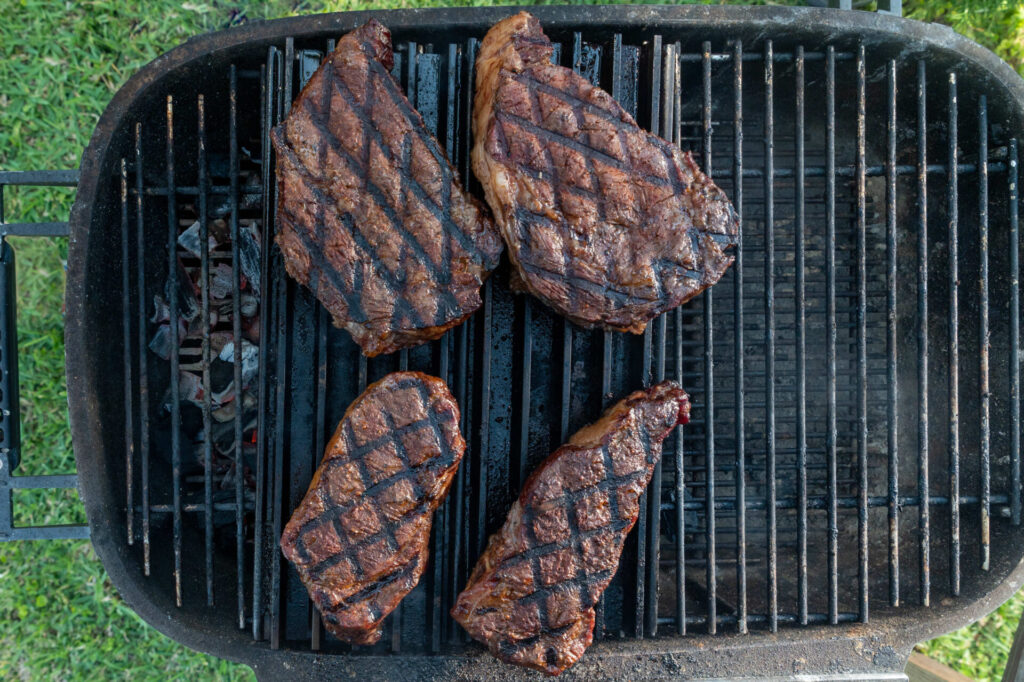
The Carnivore Diet is only foods that come from animals: meat, fish, shellfish, eggs, dairy, butter and animal fats. Spices are minimal on the carnivore diet.
Do you need to track macros on the Carnivore diet?
No, tracking macronutrients (macros) is generally not necessary on the carnivore diet. Here's why:
The carnivore diet eliminates all carbohydrate sources – there are zero net carbs in meat and other animal foods. This means carb counting is irrelevant.
Protein is abundant on the carnivore diet since meat and other animal products are the only foods allowed. As long as you are eating to satiety, getting adequate protein is rarely an issue.
The carnivore diet is also not a calorie-restricted diet. Followers eat as much as they want to satisfy hunger, so tracking calories is not a priority.
Finally, your fat intake self-regulates on the carnivore diet based on your food choices – fattier meats like ribeye over chicken breast for example. You don't need to consciously control fat percentages.
The simplicity of the carnivore diet is that no macronutrient math is required. There's no ratios to balance or limits to tracking. You simply eat fatty animal foods to satisfaction.
So tracking macros offers little benefit and is unnecessary for those following a strictly carnivorous diet. The focus is solely on eating quality meats and animal products.
Sample Carnivore Diet Meal Plan
Here is what a day in the life of eating carnivore could look like.
Breakfast:
- 3 eggs fried in tallow
- 4 oz ground beef patty
- Cheese (cheddar or gouda)
Lunch:
- 8 oz salmon fillet baked with butter
- Broccoli beef stir fry minus broccoli (just beef and butter)
Dinner:
- 6 oz steak cooked in cast iron skillet (or grilled)
- 4 oz chicken thigh
- Bacon wrapped scallops
- Raw dairy cheese
Additional options for snacks or small meals:
- Tuna salad made with canned tuna and seed oil free mayo
- Bone broth soup with meatballs
- Pork rinds and sour cream
- Hard boiled eggs
- (nitrate free) beef jerky sticks
- Leftover roast beef or steak slices
- Cubes of cheddar, Swiss or Gouda cheeses
Beverages:
- Water
- Unsweetened tea
- Black coffee
- Sparkling water
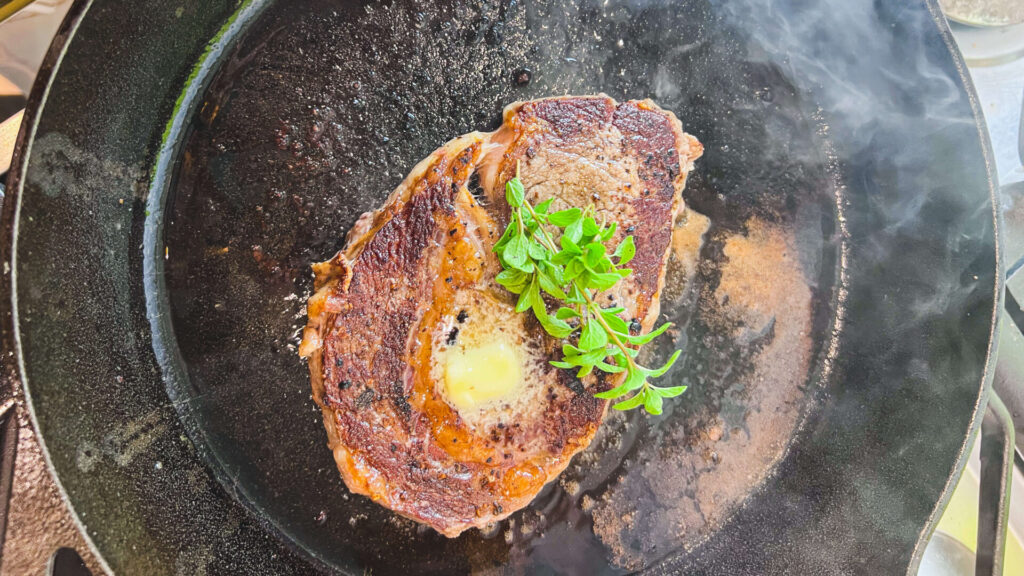
Steak cooked in a cast iron skillet is one of life's simple pleasures.
The key is focusing every meal around fatty cuts of meat, eggs, full-fat dairy if tolerated, fish and avoiding any non-animal food items including seasonings, drinks or garnishes. This provides all nutrients while restricting carbs to reach ketosis.
Carnivore Diet & Alcohol
- Most proponents of the carnivore diet avoid alcohol consumption due to it providing empty calories without nutrients.
- Some carnivore followers allow organic dry wines and unflavored clear liquors occasionally. However alcohol is seen as an unnecessary plant compound by many strict carnivores.
- Alcohol can irritate the gut lining and provoke inflammatory or autoimmune symptoms the diet seeks to heal.

On the carnivore diet, strict carnivores keep spices minimal.
Can You Cook with Herbs and Spices on the Carnivore Diet?
The inclusion of herbs and spices in a carnivore diet is somewhat controversial in the carnivore community. The overarching goal of the diet is to only eat animal foods to eliminate plant compounds and identify food intolerances. So in theory, spices and herbs should be avoided. However, many carnivore dieters allow minimal usage for added flavor variety. Here are some key considerations on a carnivore diet:
- Strict/Zero Carb Carnivore: Avoids all plant products without exception including herbs, spices, tea, coffee, etc along with obvious exclusions like grains, legumes, vegetables, etc. Water only for hydration.
- Meat-Focused Carnivore: Permits beverages like black coffee, plain tea and sparkling water. May include very small amounts of selected herbs and spices like garlic, mustard, horseradish, ginger, dill, rosemary. The philosophy is tiny amounts likely don't interfere with the carnivore approach while livening otherwise bland meals.
- Liberal Carnivore: Allows more variety like bone broth, fermented foods like kimchi, sauerkraut or kefir as well as judicious use of low/no-carb condiments. Would be most permissive regarding variety of seasoning compared to stricter interpretations.Overall, adding enough salt and potentially pepper, along with eating the highest quality meats makes strict avoidance of herbs and spices feasible for many true carnivores. But those following a longer term carnivore lifestyle tend to take a more moderate approach for palatability.
Pros and Cons of the Carnivore Diet
The carnivore diet has some notable potential benefits that attract followers to adopt an all-meat lifestyle. Firstly, the diet can alleviate inflammatory and autoimmune symptoms for those with conditions like IBS, Crohn’s disease, or fibromyalgia by removing trigger foods. The nutrient density of animal foods also nourishes the body when digestible plant matter is eliminated. Further, the simplicity of the diet makes meal planning and eating out easy—no counting macros or reading labels needed. Some also report enhanced mental clarity, weight loss, clearer skin, and improved athletic endurance on carnivore once adapted.
However, there are significant drawbacks to the extremely restrictive nature of the carnivore diet that prevent long-term sustainability for most people. Completely eliminating fruits, vegetables and whole grains had raised concerns over potential nutritional deficiencies in vitamins C, E, folate, magnesium and fiber over months and years. The diet is also very limited socially and dining out, traveling or celebrating holidays all become challenging. Additionally, issues like constipation, menstrual changes in women, and altered gut microbiome are frequently cited side effects. And while the carnivore diet may benefit those with autoimmunity, it is likely excessive and unnecessary for otherwise healthy individuals.
In the end, the carnivore diet can have therapeutic effects for some people short term. But meeting nutritional needs long-term may require periodic incorporation of plant foods. Working with a professional can help balance any benefits with the significant dietary restrictions. For most though, a more balanced approach to meat consumption alongside fruits, veggies and whole foods is advisable over the years.

Part 3: The “Animal Based Diet”: a Happy Medium between Keto and Carnivore
The animal-based diet has emerged as a more moderate alternative to the ketogenic and carnivore diets, one of the people who has made it very popular is Paul Saladino, MD, known as “Carnivore MD” on Instagram.
Like carnivore, the animal-based diet centers around nutrient-dense animal foods like meat, organis, eggs, fish, and dairy as the foundation of one's diet. However, unlike strict carnivore rules, the animal-based diet permits the incorporation of small amounts of fruits, (some low inflammatory) vegetables, and honey. This allowance of plants makes it more balanced than all-meat carnivore.
Similarly, compared to keto, the animal-based diet shares the emphasis on protein and healthy fats that satiate while providing essential fatty acids and bioavailable nutrients. However, instead of counting macros or limiting carbs to 20-30 grams, carbs are kept effortlessly lower on animal-based simply by basing meals around animal foods first. This means less tracking required compared to meticulous keto dieting.
The end result of the animal-based template is an intuitively moderate, whole foods-focused diet low in sugar and ultra-processed items but one that is joyful around occasions like celebrations or holidays where some leeway is permitted. This flexibility along with the absence of macro-counting makes animal-based sustainable long-term for many where strict keto or carnivore proves challenging socially, mentally or physically over months and years for the majority of people.
In summary, by emphasizing nourishing animal foods as the foundation while allowing sensible incorporation of plants and carbs periodically, the animal-based diet emerges as a more balanced approach compared to the restriction of keto or carnivore that proves too difficult for many to sustain.
Sample Animal Based Meal Plan
Here is what a day in the life of eating “animal based” could look like.
Breakfast:
- 3 Eggs scrambled with onions, peppers, cheese
- Nitrate free bacon or nitrate free breakfast sausage
- Berries
Lunch:
- Buffalo chicken salad (romaine, chicken, hot sauce, celery, seed oil free ranch dressing)
- Handful of mixed nuts
Dinner:
- Grilled chicken thighs (try my Mojo marinade recipe for delicious chicken thighs)
- Sweet potato
- Steamed broccoli & carrots
Snacks:
- Hard boiled eggs
- Grass-fed beef stick
- Apple slices with almond butter
- Cottage cheese with tomato and avocado
Beverages:
- Coffee with (raw)milk or (raw) creamer
- Green tea
- Sparkling water
- Fresh vegetable juice
Dessert:
- 90% dark chocolate
- Homemade protein ice cream
- Full fat ricotta cheese with honey & cinnamon

Animal based is less restrictive than Carnivore and allows for fruits and vegetables, with animal based protein being the main focus.
This sample plan focuses on eggs, poultry, beef, fish, dairy products, and some fruits, vegetables, snacks, desserts in moderation around the animal foods. An animal-based framework is the less restrictive middle ground between full carnivore and strict keto diets.
Part 4: Choosing the Right Eating Plan for You
Deciding between keto or carnivore for weight loss and health can be challenging. Here's some advice on choosing the best approach:
- Try keto first – Keto is less restrictive, so easier to adhere to long-term. You still reap benefits of carb restriction and fat-burning, with more variety of food choices. Tweak as needed, then consider carnivore if not seeing results. If Keto is to strict for you, then animal based with is another great option to consider.
- Assess your health conditions – Do you struggle with autoimmune issues, gut disorders, or food sensitivities? If so, carnivore may provide targeted relief by eliminating inflammatory compounds found in plant foods and produce.
- Consider ease of socialization – Keto offers more flexibility for dining out or eating with friends. Carnivore is extremely limiting socially, which can impact quality of life and adherence. Meal prepping is a must.
- Check nutrient intake – Getting sufficient micronutrients long-term without any fruits, vegetables, nuts or seeds can be challenging on carnivore. Keto and animal based allows those options. Consider needs and insufficiencies.
- Start with a 30 day trial – Try each diet for 30 days and journal symptoms, weight loss, lab markers, energy, hunger levels, cravings. Assess if the benefits outweigh any struggles. Tweak or switch protocols if needed.
- Get bloodwork done – Testing fasting glucose, A1c, lipids and other markers lets you monitor internal health changes. Have biomarkers rechecked at 90 days.
- In the end, try keto or animal based first, then carnivore if needing amplified benefits. Consult a practitioner to ensure either diet supports your goals and promotes wellness based on your unique biology and conditions. Be open to modifications for sustainable success.
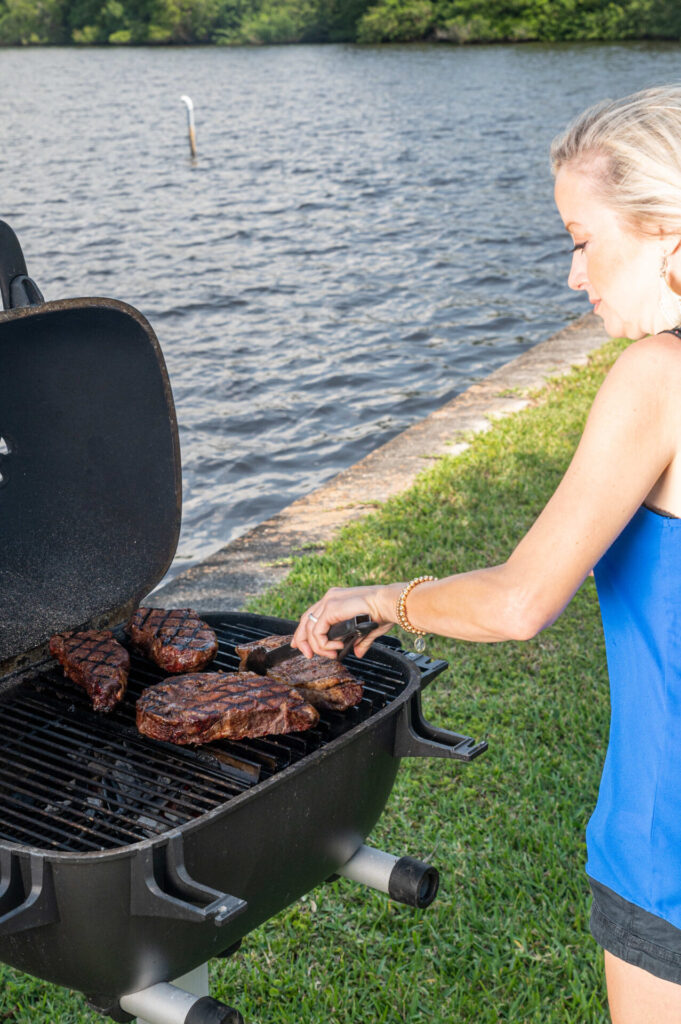
Grilling is a great way to cook all those glorious proteins on the keto, carnivore or animal based diets!
Inspirational Accounts to Follow for Keto, Carnivore and Animal Based Eating Tips:
Keto:
One of the Biggest Names in Keto is Maria Emmerrich. She’s written many keto cookbooks and her website offers a lot of keto recipes to try. She shares tons of great info on her instagram. Make sure to also give me a follow @grillgirlrobyn, most of my grilling focused content on IG is naturally keto and carnivore friendly!
Carnivore:
Shawn Baker was the brainchild of the Carnivore diet and he shares a ton of tips on his instagram feed. If you want to learn more about the carnivore diet, check out his book X
CarnivoreJT – JT has a great ebook full of carnivore diet recipes that are easy to follow.
ItsCourtneyLuna– Courtney is currently writing a Carnivore cookbook and always sharing great recipes on her feed.
Animal Based:
Paul Saladino has single handedly made “Animal Based” eating popular over the past few years. He is a Western trained doctor that backs up his research with sound medical advice.
AnimalBasedBae shares tons of great recipes and tips for an animal based lifestyle.
Overall Health and Wellness:
Ashley Auld– Ashley Auld is an integrative health practitioner and has helped me a ton with my own health and gut issues! Give her a follow for great tips on how to eat for health!
Craig McCloskey is always dropping tons of great inspirational health info on foods to include and avoid for optimal health
Lisa Health Joy – Lisa is a nutritionist and biochemist and offers great tips for optimal health!
Part 5: Keto Vs Carnivore Vs Animal Based, My Own Experience on These Diets
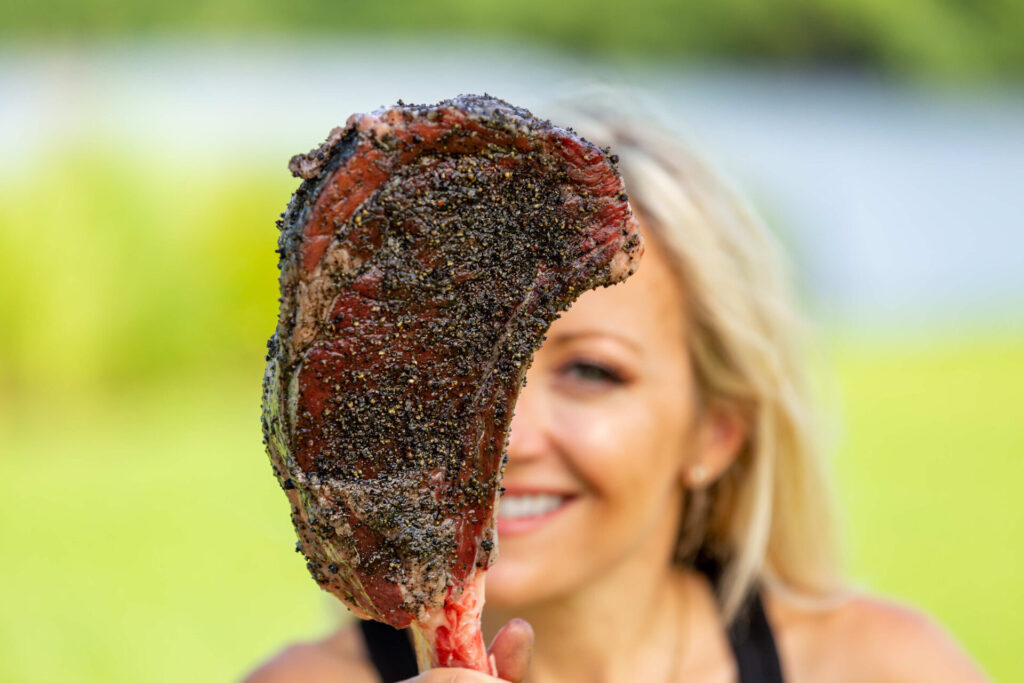
I've tried paleo, keto, carnivore and animal based eating and find animal based eating the best fit for me long term.
I’ve been eating low carb since about 2008 and have tried every diet on the planet however it wasn’t until I read “It Starts with Food” by Melissa Urban (who created the Whole 30 diet) in 2013 that I really woke up to the concept of eating for health, versus just eating to stay thin. It also really woke me up to all the processed junk “diet food” that is out there that many can get tricked with as they seek a path to weight loss.
I really got into Paleo eating in 2013 and I do believe this is a great way to eat because it force you to really identity what you are eating and what ingredients are in your food, with an emphasis on whole foods. However, I believe that it is easy for many, myself included to eat too many carbs and sugar on a paleo diet. Ie, Paleo cookies and desserts are still desserts and should be kept to a minimum, otherwise you are still sabotaging your weight loss goals.
My Experience on the Keto Diet
After I had a baby, I wanted to lose my baby weight and did strict keto for about a month, I had learned about Keto reading the book cookbook Bacon and Butter. I did lose the weight. However, I have never been good at tracking my macros and I found that after a few days the very strict low carb made my heart race. The other way I sabotage myself on the keto diet is by making “keto fat bombs” for dessert. For some reason, when I go on the keto diet my dessert cravings go through the roof, much worse than when I am not on a diet telling myself I can’t have anything, and I then start making “keto fat bombs” for dessert. However, since I’m not good at tracking macros I believe I am then eating too much fat and again, sabotaging my weight loss goals with my obsession with keto deserts!
My Experience on the Carnivore Diet
I have eaten mostly carnivore for a few days here and there and have found that I surprisingly don’t feel the need to eat vegetables as much as I thought I would. I do however need spices in my life and will not budge on that. I realize that for people eating for autoimmune disorders the elimination of all lectins and spices is key to healing health, but I did not need to be that strict.
I do feel that the elimination of fruits and veggies is not a terrible thing, as many people would have you believe, because, let's face it, there is not anything that is truly organic anymore and so much of the food supply has been tampered with. When I do eat fruits and veggies I buy organic vegetables and for fruits, I buy ones that come in a peel like oranges, bananas, and pineapples, so there is at least one barrier between me and the layer of toxins they could have been exposed to.
My Experience on the Animal Based Diet
I’ve found that I function the best on an animal-based diet. My body needs a bit of fruit and (healthy carbs) to function and this style of eating keeps me on track without any crazy dessert cravings. As strict keto makes me get crazy dessert cravings and also makes my heart race, I’ve found that an animal based diet with a few carbs is the best fit for me.
I think the idea is that you need to fill your body with WHOLE Foods that offer nutritional value. Many people will automatically lose weight on any of these eating styles by making a conscious effort to cut out processed foods. Ie, if it comes in a prepackaged bag from the grocery store, (chips, crackers, cookies, popcorn, cake, candy, softdrinks, etc) then it has no place in your pantry and in your body!
What I Eat in a Day- Sample Animal Based / Ketoish Meal Plan:
Heres a quick overview of what I might eat in a day following an Animal based diet.
Breakfast
Coffee with **raw cream, grassfed beef protein added in for more protein
3 eggs, with hotsauce
*When I’m out of raw cream, I use organic grassfed half and half
Alternate breakfast
Nitrate free Chicken sausage, orange slices
Lunch
Tuna salad with seed oil free mayo (I uses Chosen Foods)
If I want some crunch, I might add in a few msg free pork rinds as an alternative to crackers
Kombucha
Snack:
Grassfed beef stick
Dinner:
Grilled Ribeye or alternately cooked in cast iron: check out my complete guide to cooking steak with cast iron skillet, Paired with blue cheese, and butter
Sliced tomatoes or arugula salad with olive oil and balsamic glaze
Dessert
Sugar free stevia sweetened dark chocolate (try Lilly’s)
OR
A few dates

Jalapeno poppers are a delicious keto and animal based friendly appetizer or meal! One of my all time low carb favorites!!
**For special occasions, one of my favorite keto and animal based friendly appetizers to make are Jalapeno poppers! You can make an entire meal out of these! This is a filling keto diet staple to make for events like superbowl or any tailgating party that is minimal carbs!
A Note on Ingredients to Avoid or Include for Optimal Health
Avoid Nitrates: Nitrates are a preserving agent found in meats that is known to cause cancer. Avoid nitrates in foods- they are usually in things like bacon, sausage, cured meats like pepperoni and sandwich meat.
Avoid Seed Oils: Seed Oils are the Devil and should be avoided at all costs. Seed oils are industrialized oils that cause large amounts of inflammation (that produce free radicals) in the body that should not have a place in our food system but they do. Soybean and canola oil are in just about everything you can buy at the store- salad dressings, condiments, cookies, chips, crackers even coffee creamer. Make your own salad dressing and NEVER use these for cooking. You can also use the Seed Oil Scout app to find restaurants in your area that don’t cook with seed oils.
Approved Oils for Cooking With: animal fats such as lard, tallow, butter, ghee, avocado oil and coconut oil are all acceptable for cooking with.
Look for RAW Dairy: Dairy is HIGHLY nutritious when RAW, ie, unpasteurized. Sadly, pasteurizing dairy kills off all the stuff that is good for you such as the digestive enzymes and probioitics that are naturally occurring in dairy that are beneficial to your gut and make it easier to digest. Many people have found that raw dairy has completely healed their gut! Look for raw dairy at your local farmer's markets and ask your local wholefood grocer where you can find it. Raw dairy is banned in many states and is only available with a Pet license in some states. Use realmilk.com to find raw dairy near you. Learn more about the benefits of raw dairy at the rawmilkinstitute.org
Follow the Dirty Dozen for Fruits and Veg: If you are eating fruits and veggies, I highly recommend you follow the Dirty Dozen List by the Environmental Working Group. Personally, when I’m shopping, I do not buy any vegetables that are not organic. For fruits, I ALWAYS buy organic unless they come in their own peel such as oranges, bananas, melons, and pineapples. Fruits such as berries and grapes should always be bought organice, berries are always at the top of the dirty dozen list for being extremely high in glyphosate.
Avoid Bread and all wheat, oats, grain, and legume based foods (unless it is organic, I still advise to avoid as much as possible): These should be avoided at all costs! Why? These foods are not accepted by the keto, carnivore, or animal based diets. But, maybe you want to feed these to your family. Here’s the deal: Most grains have been modified from their original state, which is what many people cannot digest gluten. The wheat of today barely resembles the wheat that Jesus was eating in the Bible. (In fact, the original grain that has not been modified is called Einkorn flour and it is much easier to digest than standard wheat). Furthermore, what most people don’t realize is that ALL GRAINS and LEGUMES are sprayed with glyphosate as a desiccant, ie, a drying agent, before being sold. This is why, in the glyphosate report produced by the Institute of Responsible Technology, foods like oatmeal and garbanzo beans (used to produce Hummus) had some of the highest ratings of glyphosate. Have you ever heard the expression “It’s not the gluten, its the glyphosate?”. Glyphosate acts as a bleach and binder in your gut- ie, it kills off your gut bacteria and also binds to the nutrients in your food.
From the Environmental Working Group’s Website:
According to the National Agricultural Statistics Service, in 2017 approximately 12.4 million pounds of glyphosate were applied to various varieties of wheat grown in the U.S. Of those varieties, more than 58 percent of the acreage of durum wheat, commonly used to make pasta, was sprayed with glyphosate.
See, the “health foods” aren’t healthy at all! Not to mention that beans have what are called “antinutrients” that make them hard to digest and not as nutritious as their label implies.
Note on Ingredients: By reading labels and cutting out processed foods, you are doing your are halfway there to healing your body by eliminating the deluge of toxic chemicals found in processed foods. This in itself will help in your goals towards weight loss and optimal health!! A good rule of thumb is, if you don’t recognize the ingredient on the label, your body doesn’t recognize it either!
Trustworthy Meat Brands and Other Brand Recommendations and Discounts
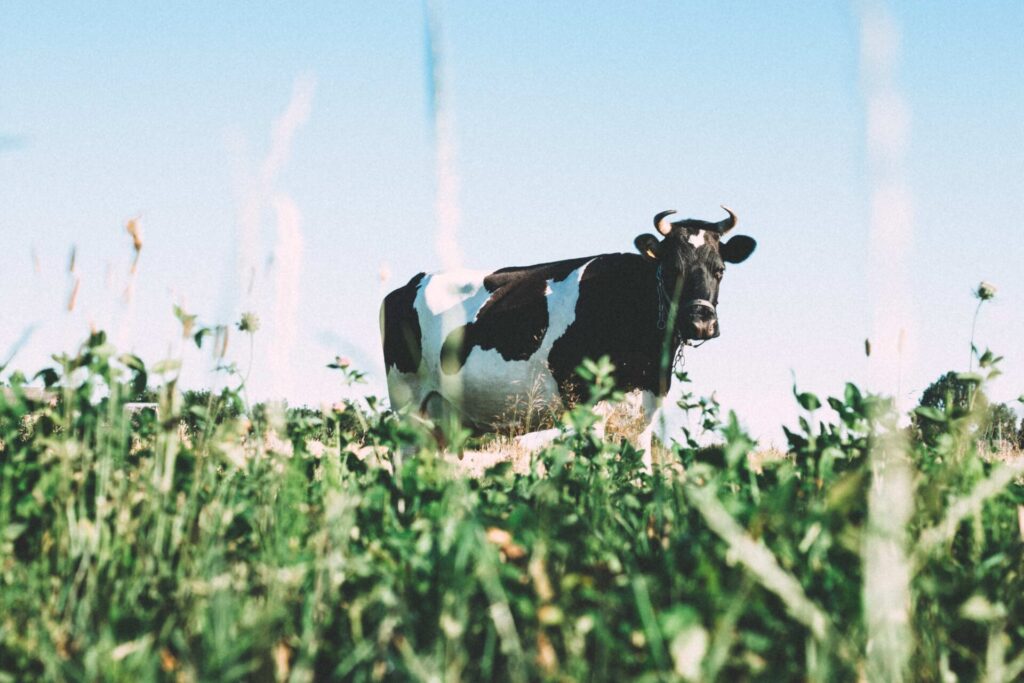
photo by Angela Litvin from unsplash
When buying ingredients, I like to remind myself “you are what you eat, and you are what you eat has eaten. So, if the cows you eat were fed a bunch of antibiotics, or gmo corn, well, you are ingesting that too.
However, I also realize that you must eat within your budget and it is my belief that even if you are eating conventionally raised CAFO environment (conventional agricultural feeding operation) beef versus grassfed beef, if you eat beef and veggies and no processed junk or carbs, you are still eating better than 99% of the population! You have to do the best you can based on your budget.
The healthiest way to eat that also supports your local community is to try to buy directly from local ranchers and farmers. That way you know how the animals were raised and how the fruit and vegetables are grown and are also supporting your local community. One of the easiest ways to identify how to eat locally is to visit local farmers markets and ask around there.
I was able to join a local food buyers club as well, this made it easier for me to directly buy from farmers. Websites like localharvest.org make it easy to find local farmers markets and CSAs (community supported agriculture) in your area.
I’m also not going to kid you and say I don’t sometimes buy things from Costco- it’s about balance, right?
It’s also easier than ever to have meat that supports local farmers shipped right to your door!
Here are some of my favorite companies that support local farmers or are local farmers that ship and guarantee all animals are grassfed, free range and no injections!:
REP Provisions– use my link and or code GRILLGIRL15 for 15% off. Rep Provisions sources meat from local farmers across the country who support regenerative farming.
White Oak Farms– use my link and or code GRILLGIRL for $20 off. White oak farms is a regenerative farm out of South Georgia. They have been at the forefront of the regenerative farming movement, as they switched themselves from being conventional to
Blackbird Farms – This is a small farm out of Rhode Island that offers Black Angus Beef and Berkshire Pork. The beef is grassfed but on Organic NON GMO corn to give nice marbling. I’m okay with this because lets face it, well marbled cows taste delicious! Their beef and pork is amazing
Use code GRILLGIRLSHIPPING for discounted shipping with Blackbird Farms.
In conclusion, Keto Vs Carnivore vs Animal Based- Which One is Right for You?
To summarize all the points I’ve made in this post, regardless of which eating style you choose to lose weight and get healthy, cutting out processed foods and reading labels is going to be a gamechanger for your health. Having said that, here are some tips for choosing the right path:
Do you have autoimmune and or gut issues? Perhaps the Carnivore Diet could be a good fit to eliminate potential ingredients that are causing inflammation and then you can slowly ease into animal based as you identify which ingredients you don’t tolerate well
Do you need flexibility and variety to succeed in a diet? Both the keto diet and Carnivore are less restrictive in the use of veggies, and herbs and could be a good fit for you.
Can you not live without fruit and worry about potential constipation? The animal based diet might be the best fit for you
If you found value in this guide, please leave me a comment below. Please know that you should consult a doctor for your own goals, I am not a medical doctor and am not offering medical advice but rather my results and research after trying all of these eating styles myself. Cheers to a healthier version of you! Leave me a comment on your experiences with these eating styles, readers will find value in the comments as you share your experiences! Thanks!!

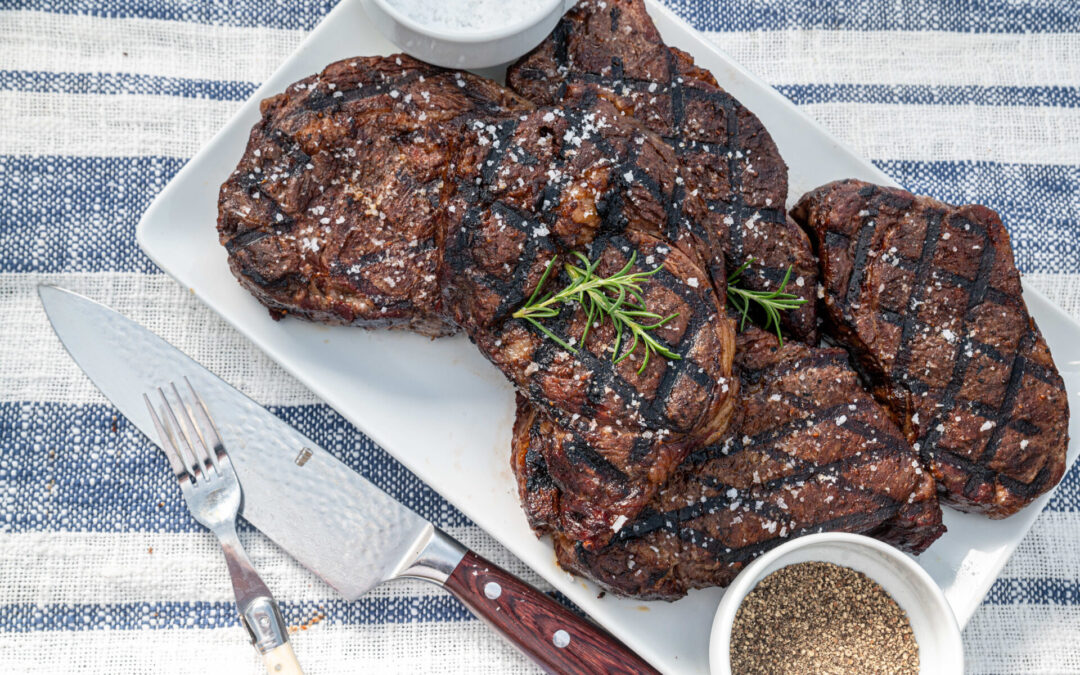

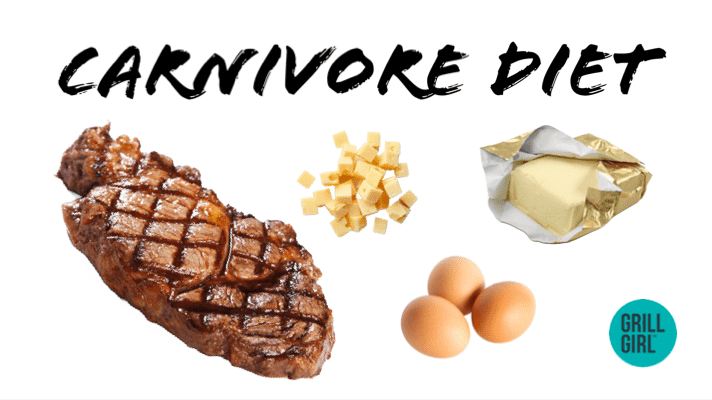


I appreciate the breakdown of the ways of eating! I am really interested in the animal based way of eating. A big question I have is what if I can’t get raw dairy? I would have to drive an hour one way to get it and that’s not always possible. What would you recommend?
Hi Ev, I know it’s not possible for everyone to get raw dairy. I do believe some places like Wholefoods and Sprouts are carrying raw(ish) or at least less pasteurized dairy. I’d say your best bet is organic full fat dairy from the grocery store.